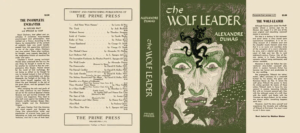
No, non sono depressa. Semplicemente in questi giorni mi sono data alla lettura di qualche noir, per una fortuita congiuntura di cause. Per un’altrettanto fortunata congiuntura di cause, mi sento di consigliarli tutti.
-
Il Karma del Gorilla, di Sandrone Dazieri. Interessante la trama, ma ancora più interessante il personaggio dell’investigatore dalla doppia personalità o, meglio, dei due investigatori che albergano nello stesso corpo. Ora sto leggendo La cura del Gorilla, non un seguito né il libro da cui è stato tratto il recente film con Bisio. Solo un altro della serie. Grazie a Ubi Mario che mi ha consigliato questo autore
-
Qualcosa che non resta di Fabrizio Canciani (attenzione, il sito è brutto ma soprattutto è giallo). Avevo già letto il precedente La regola della cattura e devo dire che questo sembra un po’ più maturo, anche se forse meno originale (e l’autore dovrebbe smetterla di descrivere le scene di sesso perché non ci sa proprio fare). Gucciniano, già dal titolo, introduce alcuni personaggi notevoli tra cui la tassista zen. Merita sicuramente una lettura.
-
Il banchiere di Pedro Casals. Terzo della serie che vede come protagonista l’avvocato Salinas, non è proprio un noir. Anzi, in effetti è proprio un giallo. Anche questo è più costruito degli altri due, più sviluppato il personaggio dell’avvocato secondo le linee guida che l’autore delinea in fondo ad ogni suo libro (istantanea in bianco e nero: cos’è e cosa non è il protagonista). Tra l’altro avevo assistito alla presentazione del primo libro, molto tempo fa, alla Fnac di Milano. E Casals è decisamente simpatico.
Ora, terminata La cura del gorilla, temo che dovrò dedicarmi alla lettura di Il paesaggio, di Maurizio Vitta. Ma questa è un’altra storia…







No Comments